On this page, you will find a comprehensive yoga vocabulary list. Explore various resources such as games, flashcards, and more related to this subject. Get ready to expand your knowledge of yoga terminology and enhance your understanding of this practice.
Yoga is a popular form of exercise that combines physical postures, breathing techniques, and meditation to improve overall health and well-being. Practicing yoga regularly can help increase flexibility, reduce stress, and promote relaxation. Additionally, yoga has been shown to improve strength, balance, and mental clarity. Whether you’re a beginner or an experienced yogi, incorporating yoga into your fitness routine can have numerous benefits for both the mind and body.
Practice & Reinforce Your Learning
Yoga Vocabulary List
Hatha Yoga

Pranayama(Noun)
/Pra-na-ya-ma/
Pranayama is a breathing technique in Hatha Yoga that involves controlling the breath to promote relaxation, concentration, and energy flow.
Synonyms: breath control, breath regulation, breathing exercises, yogic breathing
Example Sentences:
- I find that practicing Pranayama before bed helps me unwind and prepare for a restful night's sleep.
- During my yoga practice, I focus on incorporating Pranayama to center myself and enhance my overall experience.
- After a hectic day at work, I always turn to Pranayama to calm my mind and recharge my energy levels.
Word Origin: The word "Pranayama" is derived from two Sanskrit words: "Prana," which means life force or vital energy, and "Yama," which means control or restraint. In the context of Hatha Yoga, Pranayama refers to a set of breathing techniques and exercises that aim to control and manipulate the flow of prana in the body. These practices are believed to help purify the body and mind, increase vitality, and promote overall well-being.
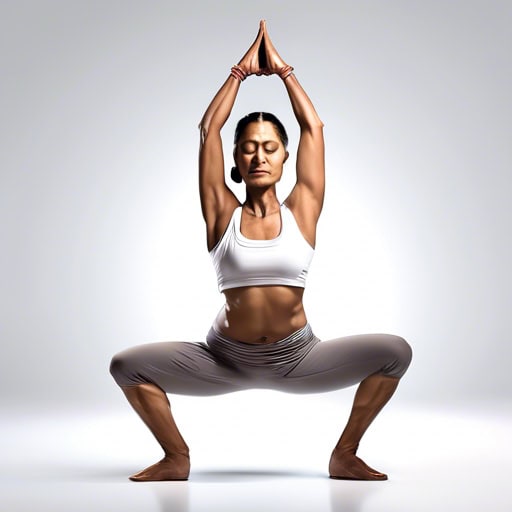
Asana(Noun)
/1. Mountain Pose - Ta-da-sa-na
2. Tree Pose - Vriks-ha-sa-na
3. Warrior Pose - Vi-ra-bha-dra-sa-na
4. Child's Pose - Ba-la-sa-na
5. Cobra Pose - Bhu-jang-ga-sa-na
6. Downward Facing Dog Pose - A-dho-muk-ha-sva-na-sa-na
7. Triangle Pose - Tri-ko-na-sa-na
8. Lotus Pose - Pa-da-ma-sa-na
9. Bridge Pose - Se-thu-ban-da-sa-na
10. Corpse Pose - Sha-va-sa-na/
Asana refers to the physical postures practiced in Hatha Yoga, designed to promote strength, flexibility, and balance in the body.
Synonyms: pose, posture, position, stance, seat
Example Sentences:
- She held a challenging asana for several breaths, feeling her muscles engage and strengthen.
- Practicing various asanas regularly has helped improve her flexibility and balance over time.
- The yoga instructor guided the class through a series of gentle asanas to help relax the body and calm the mind.
Word Origin: The word "asana" comes from Sanskrit, an ancient Indo-European language that is the sacred language of Hinduism and the language of classical Indian philosophy. In Sanskrit, "asana" means "seat" or "posture." In the context of Hatha Yoga, "asana" refers to the physical postures or positions that are practiced as part of a yoga routine. The practice of asanas is an integral part of Hatha Yoga, with each posture designed to improve physical health, mental clarity, and spiritual well-being.
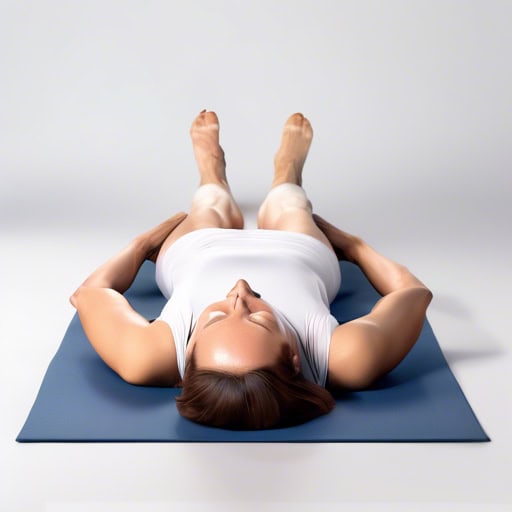
Savasana(Noun)
/Savasana = Sah-vah-sah-nah/
Savasana, also known as Corpse Pose, is a relaxation pose at the end of a yoga session for deep rest.
Synonyms: corpse pose, final relaxation pose, relaxation pose, dead man's pose
Example Sentences:
- After a challenging yoga session, I always look forward to the peaceful Savasana to relax my mind and body.
- Savasana is often considered the most important pose in yoga, allowing practitioners to fully absorb the benefits of their practice.
- During Savasana, I focus on my breath and let go of any tension or stress, sinking into a state of complete relaxation.
Word Origin: The word "Savasana" is derived from Sanskrit, with "Sava" meaning "corpse" and "asana" meaning "pose" or "posture." Therefore, Savasana is often translated as "Corpse Pose" in English. This posture is typically practiced at the end of a Hatha Yoga session to allow the body to relax and integrate the benefits of the practice.

Namaste(Greeting)
/Na-ma-ste/
A traditional greeting in Hatha Yoga, "Namaste" is a Sanskrit word meaning "I bow to you" or "the divine in me honors the divine in you."
Synonyms: Greetings, Welcome, Salutations, Blessings
Example Sentences:
- Namaste, my fellow yogis.
- Let us begin our practice by honoring each other with a heartfelt Namaste.
- After a challenging class, we closed our practice with a peaceful Namaste.
Word Origin: The word "Namaste" is a common greeting in India and Nepal that is often used in the context of Hatha Yoga. It comes from Sanskrit and is a combination of the word "namah" which means "bow" or "obeisance" and the word "te" which means "to you." Therefore, the literal translation of Namaste is "I bow to you" or "I bow to the divine in you." This greeting is used as a sign of respect and acknowledgment of the divine spark within each person.
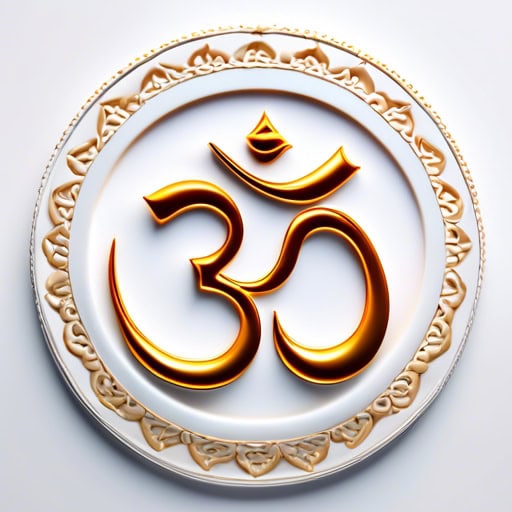
Om(Noun)
/Om: Aum/
"Om is a sacred mantra chanted at the beginning and end of a yoga practice, symbolizing the unity of body, mind, and spirit."
Synonyms: unity, divine, universal, spiritual, mantra, vibration
Example Sentences:
- I closed my eyes and focused on the sound of "Om" reverberating through the room.
- After a long day, I find peace and tranquility in chanting "Om" as part of my evening meditation.
- The vibration of "Om" resonates deeply within me, connecting me to my inner self and the universe.
Word Origin: The word "Om" is a sacred sound and spiritual symbol in Indian religions, including Hinduism, Buddhism, and Jainism. It is often chanted at the beginning and end of yoga sessions, as well as during meditation and prayer.
The etymology of the word "Om" is derived from Sanskrit, the ancient language of India. It is believed to be a combination of three sounds: "A," "U," and "M." According to Hindu philosophy, these three sounds represent the three stages of consciousness - waking, dreaming, and deep sleep - as well as the three major Hindu deities - Brahma, Vishnu, and Shiva.
The sound of "Om" is said to create a sense of unity and connection with the divine, helping to bring balance and harmony to the mind, body, and spirit. It is also believed to be a powerful mantra that can help purify the mind and open the heart to higher states of consciousness.
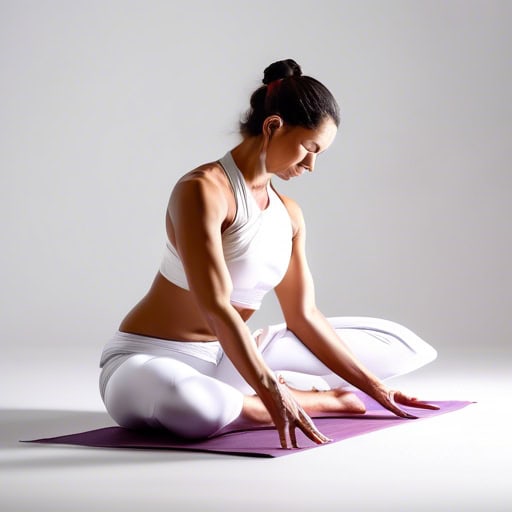
Bandha(Noun)
/1. Bandha: bun-dah
2. Mula Bandha: moo-lah bun-dah
3. Uddiyana Bandha: ooh-dee-yah-nah bun-dah
4. Jalandhara Bandha: juh-luhn-dah-rah bun-dah/
Bandha refers to a specific body lock or muscular engagement used in Hatha Yoga to channel and control energy flow.
Synonyms: bond, lock, seal, posture, energy lock
Example Sentences:
- She focused on engaging her Bandhas during her yoga practice to deepen her connection with her breath and movement.
- The instructor emphasized the importance of activating the Bandhas to enhance stability and alignment in poses.
- By incorporating Bandhas into her practice, she was able to access a greater sense of inner strength and control.
Word Origin: The word "bandha" in the context of Hatha Yoga comes from Sanskrit, an ancient Indo-European language that is the liturgical language of Hinduism. In Sanskrit, "bandha" means "lock" or "binding." In Hatha Yoga, bandhas are specific physical and energetic locks or contractions that are used to direct and control the flow of energy within the body. These bandhas are believed to help regulate the flow of prana (life force) and aid in the practice of asanas (yoga postures) and pranayama (breath control).
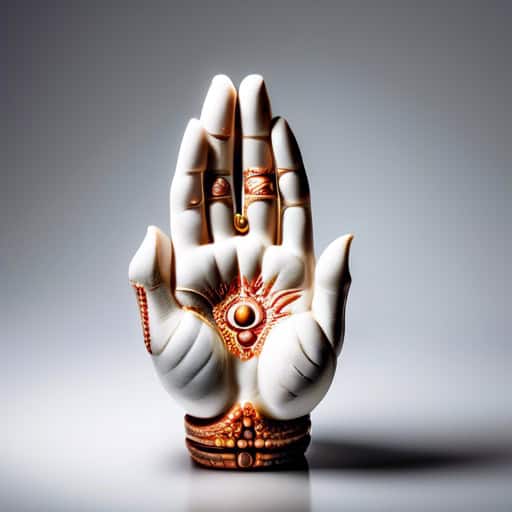
Mudra(Noun)
/Mudra: moo-drah/
Mudras are symbolic hand gestures used in Hatha Yoga to channel energy flow and enhance concentration and meditation practice.
Synonyms: hand gesture, seal, pose, position, symbol
Example Sentences:
- She performed the Chin Mudra during her meditation practice to enhance her focus.
- The Jnana Mudra is often used to help calm the mind and bring clarity to thoughts.
- The Prithvi Mudra is believed to increase grounding and stability during yoga practice.
Word Origin: The word "mudra" comes from Sanskrit, with the root "mud" meaning "to delight" or "to please." In the context of Hatha Yoga, mudras refer to symbolic hand gestures or poses that are used to channel energy and stimulate different parts of the body. These gestures are believed to have a profound effect on the mind and body, helping to balance energy flow and enhance concentration during meditation and yoga practice.
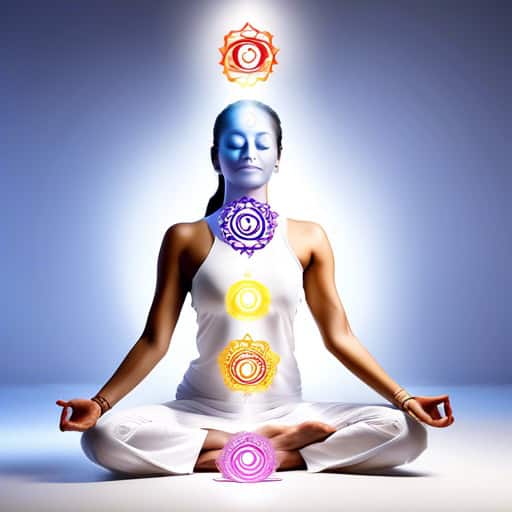
Chakra(Noun)
/Chakra: CHUH-kruh/
Chakras are the energy centers located along the spine, influencing physical, emotional, and spiritual well-being in Hatha Yoga practice.
Synonyms: root, sacral, solar plexus, heart, throat, third eye, crown
Example Sentences:
- Her root chakra was unbalanced, leading to feelings of insecurity and instability in her life.
- During meditation, she focused on aligning her chakras to promote overall well-being and inner harmony.
- The instructor guided the class through a series of poses aimed at opening and balancing each chakra in the body.
Word Origin: The word "chakra" comes from Sanskrit, an ancient Indo-European language that is the liturgical language of Hinduism, Buddhism, and Jainism. In Sanskrit, "chakra" means "wheel" or "circle." In the context of Hatha Yoga, "chakra" refers to the seven energy centers located along the spine, each corresponding to different aspects of physical, emotional, and spiritual well-being. The concept of chakras is an integral part of Hatha Yoga philosophy and practice, with each chakra believed to be associated with specific qualities and functions.
Vinyasa Yoga

Flow(Noun)
/1. Slow - s-loh
2. Breath - breth
3. Movement - moo-vuh-muhnt
4. Inhale - in-hayl
5. Exhale - eks-hayl
6. Flowing - floh-ing
7. Sequence - see-kwuhns/
Flow in Vinyasa Yoga refers to the seamless and continuous movement between yoga poses, synchronized with the breath.
Synonyms: movement, sequence, transition, progression, fluidity, continuity, rhythm, connection, stream, progression
Example Sentences:
- The instructor guided us through a series of poses, emphasizing the importance of maintaining a steady flow.
- I struggled to find my flow at first, but eventually I felt more connected to my breath and movements.
- The key to a successful Vinyasa practice is to find a balance between strength and grace in each flow.
Word Origin: The word "flow" in the context of Vinyasa Yoga comes from the Sanskrit word "vinyasa," which means "arranging something in a special way." Vinyasa Yoga is a dynamic style of yoga that synchronizes movement with breath, creating a continuous flow of poses. The term "flow" in Vinyasa Yoga refers to the smooth transitions between poses and the overall sense of fluidity and movement in the practice.
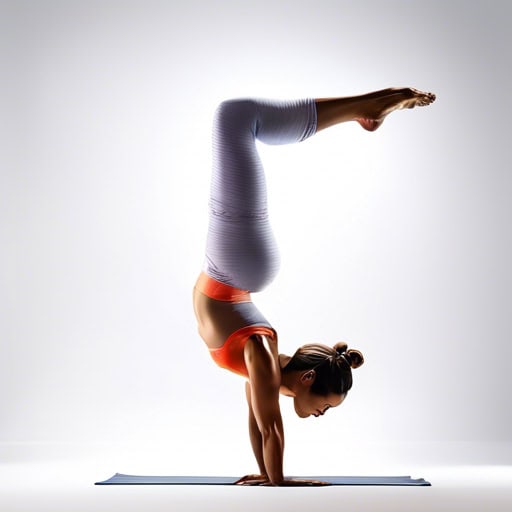
Asana(Noun)
/1. Warrior - Wah-ree-er
2. Tree - Tree
3. Downward Dog - Down-ward Dawg
4. Child's Pose - Ch-ai-lds Pohz
5. Mountain - Moun-tin/
Asana refers to the physical postures practiced in Vinyasa Yoga, focusing on alignment, breath, and mindfulness during movement sequences.
Synonyms: pose, posture, position, stretch, movement, flow, sequence
Example Sentences:
- During the Vinyasa Yoga class, the instructor guided the students through various asanas, emphasizing the importance of proper alignment and breath control.
- The asana sequence included a combination of standing, balancing, and seated postures, challenging the students to stay present and focused throughout the practice.
- After practicing the challenging arm balance asana, the students felt a sense of accomplishment and inner strength.
Word Origin: The word "asana" comes from Sanskrit, the ancient language of India. In Sanskrit, "asana" means "seat" or "pose." In the context of Vinyasa Yoga, "asana" refers to the physical postures or poses that are practiced as part of a flowing sequence of movements. The practice of asanas is a key component of Vinyasa Yoga, helping to build strength, flexibility, and balance in the body, as well as promoting focus and relaxation in the mind.
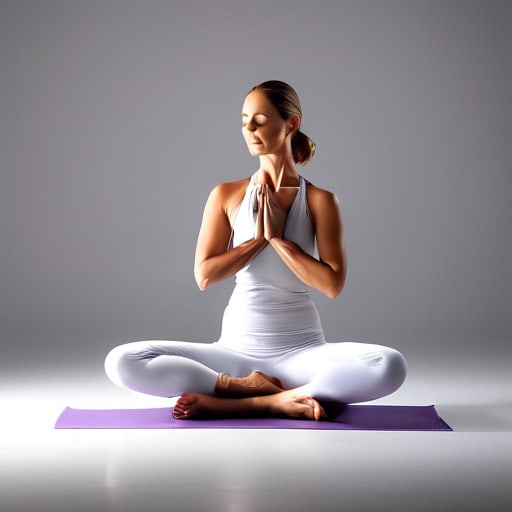
Breath(Noun)
/Breath - Breh-th/
Breath refers to the conscious and controlled inhalation and exhalation practiced during Vinyasa Yoga to synchronize movement and create flow.
Synonyms: inhale, exhale, respiration, breathwork, pranayama, breath control, life force, inspiration
Example Sentences:
- She focused on her breath as she moved through the Vinyasa flow, feeling the rhythm of each inhale and exhale.
- With each breath, she found a sense of calm and presence in the moment, letting go of any distractions or worries.
- The instructor reminded the class to connect with their breath, using it as a tool to channel their energy and movement.
Word Origin: The word "breath" in the context of Vinyasa Yoga comes from the Old English word "bræð," which means "scent, vapor, exhalation." This word is derived from the Proto-Germanic word "bræthaz," meaning "smell, exhalation." The concept of breath in yoga is closely linked to the idea of prana, or life force energy, which is believed to flow through the body with each inhale and exhale. The Sanskrit word for breath is "pranayama," which is a combination of "prana" (life force) and "ayama" (control). In Vinyasa Yoga, the breath is used as a tool to connect movement with breath, creating a flowing and meditative practice.
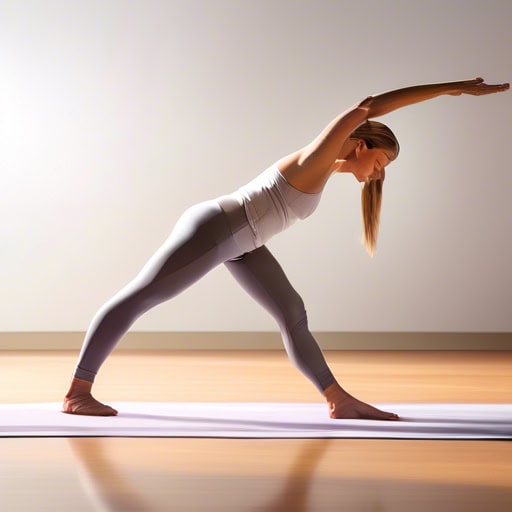
Sun Salutation(Noun)
/Sun Salutation:
Sun - suhn
Salutation - suh-luh-tey-shuhn/
Sun Salutation is a series of yoga poses performed in a flowing sequence, typically used as a warm-up in Vinyasa Yoga.
Synonyms: Sun Salute, Surya Namaskar, Sun A, Salute to the Sun
Example Sentences:
- She began her yoga practice with a series of Sun Salutations to warm up her body and center her mind.
- The instructor guided the class through a series of Sun Salutations, encouraging everyone to move with their breath.
- After completing a few rounds of Sun Salutations, she felt energized and ready to tackle the rest of her yoga practice.
Word Origin: The term "Sun Salutation" in the context of Vinyasa Yoga comes from the Sanskrit words "Surya" meaning "sun" and "Namaskara" meaning "salutation" or "greeting." In Vinyasa Yoga, Sun Salutation refers to a sequence of yoga poses that are performed in a flowing, dynamic manner to energize the body and mind. The practice is often done at the beginning of a yoga session to warm up the body and connect with the energy of the sun. The Sun Salutation sequence is believed to have originated as a way to honor and connect with the sun, which is considered a source of energy and vitality in many ancient Indian traditions.
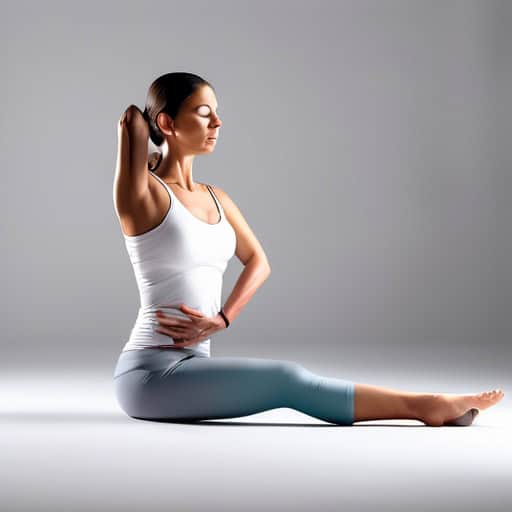
Pranayama(Noun)
/Pra-na-ya-ma/
Pranayama is a Sanskrit term meaning "breath control." In Vinyasa Yoga, it refers to regulating and controlling the breath during practice.
Synonyms: breathwork, conscious breathing, yogic breathing
Example Sentences:
- Pranayama is an important aspect of Vinyasa Yoga as it helps in syncing movement with breath.
- During a challenging yoga class, focusing on Pranayama can help calm the mind and increase concentration.
- Regular practice of Pranayama can improve lung capacity and overall respiratory health.
Word Origin: The word "Pranayama" is derived from two Sanskrit words: "Prana," which means life force or vital energy, and "Yama," which means control or restraint. In the context of Vinyasa Yoga, Pranayama refers to the practice of controlling and directing the breath in order to increase the flow of prana throughout the body. This breathing technique is an essential component of Vinyasa Yoga, as it helps to cultivate mindfulness, focus, and relaxation during the practice.

Chaturanga(Noun)
/Cha-tu-ran-ga/
Chaturanga is a foundational yoga pose that involves lowering the body from a high plank position to a low plank.
Synonyms: Plank pose, Low push-up, Four-limbed staff pose
Example Sentences:
- I struggle to maintain proper alignment in Chaturanga during my yoga practice.
- My arms feel so much stronger after consistently practicing Chaturanga.
- It is important to engage the core muscles while transitioning into Chaturanga to protect the lower back.
Word Origin: The word "Chaturanga" in the context of Vinyasa Yoga comes from Sanskrit. It is derived from the combination of two Sanskrit words: "Chatur" meaning "four" and "anga" meaning "limb" or "part". Therefore, "Chaturanga" translates to "four limbs" or "four parts". In the context of Vinyasa Yoga, Chaturanga refers to the yoga pose known as Four-Limbed Staff Pose, where the body is held in a push-up position with the hands directly under the shoulders, the body in a straight line, and the elbows bent at a 90-degree angle.
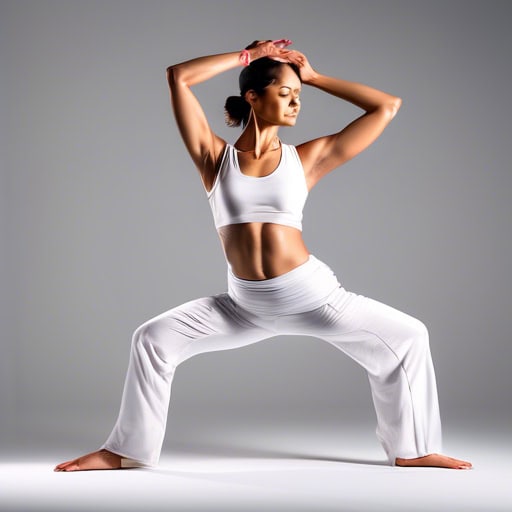
Drishti(Noun)
/Drishti - Druh-shtee/
Drishti refers to the focused gaze or point of focus that is used during yoga practice to maintain concentration.
Synonyms: gaze, focal point, focal gaze, eye focus, visual point
Example Sentences:
- Her drishti was fixed on a point on the wall as she moved through her sun salutations.
- During the balancing poses, she struggled to maintain her drishti and keep her balance at the same time.
- The teacher reminded the students to find their drishti to help them stay present and focused during their practice.
Word Origin: The word "Drishti" comes from Sanskrit, an ancient Indo-European language. In the context of Vinyasa Yoga, "Drishti" refers to a focused gaze or point of focus during a yoga practice. This gaze is meant to help practitioners maintain concentration, balance, and mindfulness during their practice. The word "Drishti" is derived from the Sanskrit root "dṛś," which means "to see" or "to look."

Ujjayi(Adjective)
/Oo-jai/
Ujjayi is a breathing technique used in Vinyasa Yoga where one breathes through the nose with a slight constriction in the throat.
Synonyms: whispering breath, ocean breath, victorious breath
Example Sentences:
- Her Ujjayi breath was steady and audible throughout the entire yoga class, helping her stay focused and present on her mat.
- The instructor reminded the students to engage in Ujjayi breathing to help generate heat and energy within the body during their practice.
- By practicing Ujjayi breathing, she was able to calm her mind and deepen her connection to her breath and movements on the mat.
Word Origin: The word "Ujjayi" comes from the Sanskrit language, where "Ujjayi" (उज्जायी) means "victorious" or "expanding." In the context of Vinyasa Yoga, Ujjayi refers to a specific breathing technique where the practitioner breathes in and out through the nose while slightly constricting the back of the throat, creating a soft hissing or ocean-like sound. This practice is believed to create heat in the body, increase concentration, and help regulate the flow of energy throughout the body.
Ashtanga Yoga

Ashtanga(Noun)
/Ashtanga - AH-sh-tahn-guh/
Ashtanga refers to a specific style of yoga that involves a set sequence of poses performed in a flowing, dynamic manner.
Synonyms: Vinyasa, Power Yoga, Tristhana, Yoga Chikitsa, Yoga Therapy
Example Sentences:
- I have been practicing Ashtanga yoga for three years and have noticed significant improvements in my flexibility and strength.
- Ashtanga yoga is known for its challenging sequences and emphasis on breath control.
- Many yoga studios offer Ashtanga classes for practitioners of all levels.
Word Origin: The word "Ashtanga" comes from Sanskrit and is a compound word made up of two parts: "ashta," meaning "eight," and "anga," meaning "limbs" or "components." In the context of Ashtanga Yoga, the term refers to the eight limbs or components outlined by the sage Patanjali in the Yoga Sutras, which serve as the foundation for the practice of Ashtanga Yoga.

Asana(Noun)
/Ah-sah-nah/
Asana refers to the physical postures practiced in Ashtanga Yoga, designed to promote strength, flexibility, and focus during meditation.
Synonyms: posture, pose, position, seat, seat of meditation
Example Sentences:
- During my yoga practice, I focused on perfecting my warrior asana.
- The instructor guided us through a series of challenging asanas to improve our balance and flexibility.
- I struggle with holding the crow asana for more than a few breaths, but I am determined to improve.
Word Origin: The word "asana" comes from Sanskrit, where it is derived from the root word "as," which means "to sit" or "to be present." In the context of Ashtanga Yoga, "asana" refers to the physical postures or poses that are practiced as part of the yoga discipline. These postures are designed to promote strength, flexibility, balance, and relaxation in the body and mind.
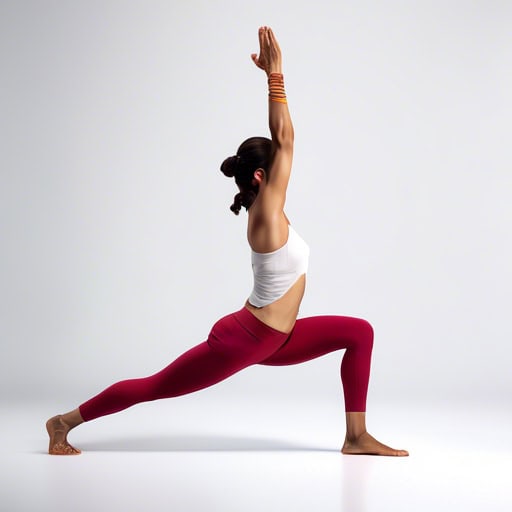
Primary Series(Noun)
/Primary Series: Pry-muh-ree Seer-eez/
The Primary Series in Ashtanga Yoga is a set sequence of postures designed to purify the body and cultivate strength.
Synonyms: Primary Series: First Series, Yoga Chikitsa, Yoga Therapy Series
Example Sentences:
- The Primary Series in Ashtanga Yoga is the foundation of the practice and focuses on building a strong physical and mental foundation.
- Practicing the Primary Series regularly can lead to increased flexibility, improved focus, and a sense of overall well-being.
- Many students find the Primary Series challenging yet rewarding, as it allows them to deepen their practice and develop a greater sense of discipline.
Word Origin: The term "Primary Series" in the context of Ashtanga Yoga comes from the Sanskrit word "prathamārya," which translates to "first" or "primary" series. In Ashtanga Yoga, the Primary Series refers to the first sequence of yoga poses that students learn and practice. It is considered the foundation of the Ashtanga Yoga practice and is designed to purify and strengthen the body, focusing on building flexibility, strength, and endurance.
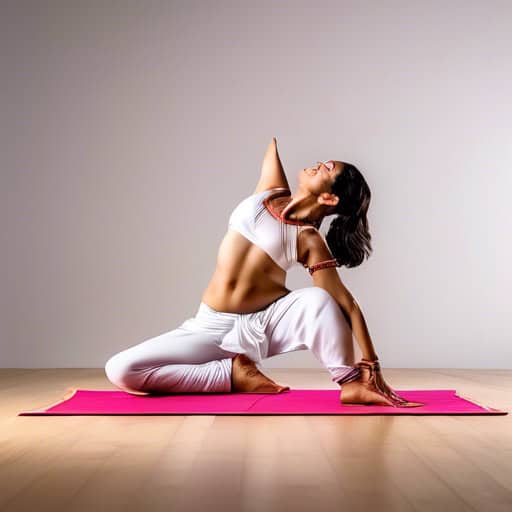
Mysore(Noun)
/My-sor/
Mysore refers to a traditional style of self-paced Ashtanga Yoga practice where students move through a set sequence at their own pace.
Synonyms: Mysore-style, self-practice, traditional Ashtanga practice, individual practice, self-led practice
Example Sentences:
- I am planning to attend a Mysore class tomorrow morning to work on my practice.
- Many dedicated yogis find great benefit in the self-paced nature of Mysore practice.
- The Mysore style of Ashtanga Yoga allows for individualized attention from the teacher.
Word Origin: The word "Mysore" in the context of Ashtanga Yoga comes from the city of Mysore in the southern state of Karnataka, India. Ashtanga Yoga is a traditional style of yoga that was popularized by Sri K. Pattabhi Jois, who was based in Mysore and taught the practice there for many years. The city of Mysore has become synonymous with Ashtanga Yoga due to its association with Jois and his teachings.
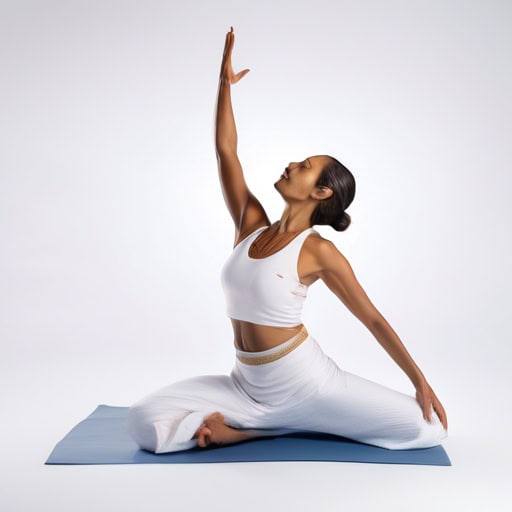
Ujjayi(Adjective)
/Oo-jai/
Ujjayi is a breathing technique used in Ashtanga Yoga where the practitioner breathes deeply through the nose with a slight constriction in the throat.
Synonyms: ocean breath, victorious breath
Example Sentences:
- Ujjayi breathing helps to create heat in the body during a yoga practice.
- The sound of Ujjayi breathing is often compared to the sound of ocean waves.
- Practicing Ujjayi breathing can help to calm the mind and focus the energy inwards.
Word Origin: The word "Ujjayi" comes from the Sanskrit language. It is derived from the root words "ud" which means "upward" or "expanding," and "ji" which means "to conquer" or "to be victorious." In the context of Ashtanga Yoga, Ujjayi refers to a specific breathing technique where the breath is intentionally restricted at the back of the throat, creating a soft, ocean-like sound. This technique is believed to help calm the mind, regulate the breath, and build internal heat in the body during yoga practice.
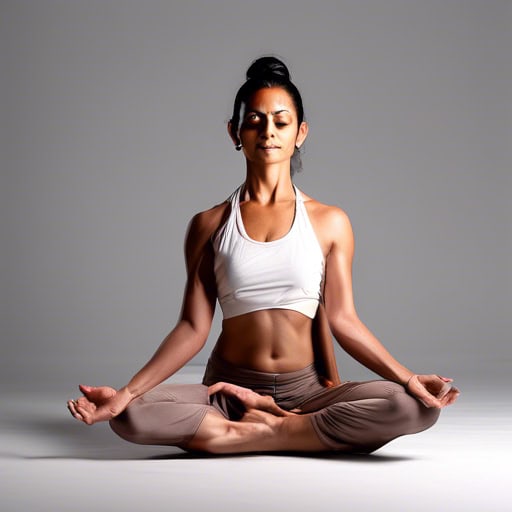
Drishti(Noun)
/Drishti - drish-tee/
Drishti refers to a specific focal point or gaze used during yoga practice to help improve concentration and alignment.
Synonyms: concentration, gazing point, focal point, focused gaze, vision, fixed gaze, eye focus
Example Sentences:
- Her Drishti was fixed on a point on the wall during her balancing pose, helping her stay steady and focused.
- The teacher reminded the students to maintain their Drishti throughout the practice to deepen their connection to their breath and body.
- By focusing on her Drishti during her practice, she was able to let go of distractions and find a sense of inner peace.
Word Origin: The word "Drishti" comes from the Sanskrit language and is commonly used in the context of Ashtanga Yoga. In Sanskrit, "Drishti" means "gaze" or "view." In yoga, Drishti refers to the focused gaze or specific point of focus that practitioners use during their practice to help improve concentration, balance, and alignment. The practice of Drishti is an important aspect of Ashtanga Yoga as it helps the practitioner develop mindfulness and control over their mind and body.
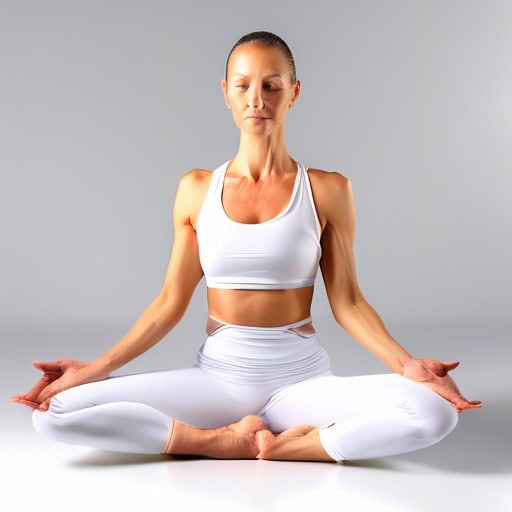
Bandhas(Noun)
/1. Bandhas: BUN-duhs
2. Mula Bandha: MOO-luh BUN-duh
3. Uddiyana Bandha: OOH-dee-YAH-nuh BUN-duh
4. Jalandhara Bandha: juh-luhn-DAH-ruh BUN-duh/
Bandhas are internal energy locks used in Ashtanga Yoga to control the flow of energy and enhance stability and focus.
Synonyms: Mula Bandha, Uddiyana Bandha, Jalandhara Bandha
Example Sentences:
- During my Ashtanga Yoga practice, I focus on engaging my Bandhas to help me maintain balance and stability in challenging poses.
- I find that activating my Bandhas helps me to channel my energy more effectively and improve my overall practice.
- Learning to properly engage my Bandhas has allowed me to deepen my understanding of the mind-body connection in yoga.
Word Origin: The word "bandhas" in the context of Ashtanga Yoga originates from Sanskrit. In Sanskrit, "bandha" means to bind, lock, or tighten. In Ashtanga Yoga, bandhas refer to energetic locks or seals that are used to control the flow of energy within the body during the practice of yoga postures. The bandhas are believed to help redirect and enhance the flow of prana (life force energy) throughout the body, ultimately leading to a deeper and more focused yoga practice.

Vinyasa(Noun)
/vee-nyah-sah/
Vinyasa refers to the synchronization of breath with movement in a flowing sequence of yoga poses, linking postures together smoothly.
Synonyms: flow, sequence, dynamic movement, synchronization of breath and movement
Example Sentences:
- I love the fluidity of Vinyasa yoga, as it allows me to focus on my breath while moving through various poses.
- The Vinyasa class I attended yesterday had a challenging sequence that left me feeling both energized and relaxed.
- In Vinyasa practice, the transitions between poses are just as important as the poses themselves, creating a seamless flow of movement and breath.
Word Origin: The word "vinyasa" comes from the Sanskrit language. In Sanskrit, "vi" means "in a special way" and "nyasa" means "to place." Therefore, "vinyasa" can be translated to mean "placing in a special way" or "arranging in a specific manner." In the context of Ashtanga Yoga, vinyasa refers to the coordinated movement of breath and body from one yoga posture to the next in a flowing sequence.
Bikram Yoga

Balance(Noun)
/Bal-uhns/
Balance in Bikram Yoga refers to the ability to maintain stability and control while holding challenging poses and postures.
Synonyms: equilibrium, stability, poise, steadiness, centering, symmetry, alignment, control, evenness, harmony
Example Sentences:
- Her balance in Bikram Yoga was impressive as she effortlessly held the standing bow pose for several breaths.
- Finding the perfect balance between strength and flexibility is essential in Bikram Yoga to prevent injury and promote overall well-being.
- Maintaining balance in Bikram Yoga requires focus, concentration, and a deep connection with the breath.
Word Origin: The word "balance" in the context of Bikram Yoga comes from the Latin word "bilanx," which means having two scales or dishes for weighing. In yoga, balance refers to the ability to maintain stability and equilibrium in various postures and poses. This includes physical balance as well as mental and emotional balance. The concept of balance is central to the practice of yoga as it promotes harmony and well-being in both the body and mind.
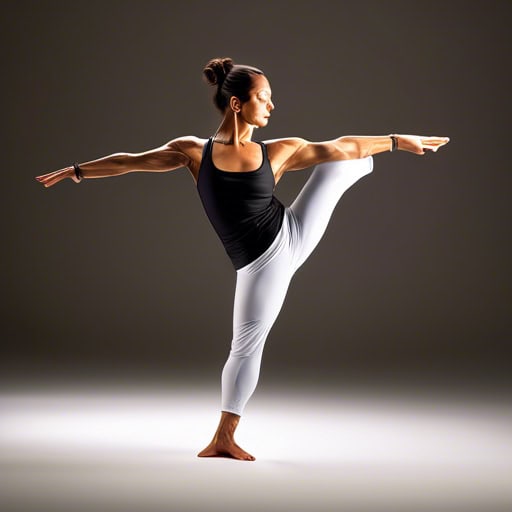
Strength(Noun)
/Strength: strenTH/
Strength in Bikram Yoga refers to the physical and mental ability to hold challenging poses, improve balance, and build endurance.
Synonyms: power, stamina, endurance, resilience, vitality, force, energy, vigor, muscle, robustness
Example Sentences:
- Her strength in Bikram Yoga allowed her to hold a difficult pose for an extended period of time.
- Through consistent practice, his strength and flexibility improved significantly in Bikram Yoga.
- The mental strength gained from Bikram Yoga helped her overcome challenges both on and off the mat.
Word Origin: The word "strength" in the context of Bikram Yoga comes from the Old English word "strengþu", which means "force, power, vigor, firmness, or toughness". In Bikram Yoga, strength refers to the physical and mental power and resilience that practitioners develop through consistent practice and dedication to the challenging series of postures and breathing exercises. This strength helps students improve their flexibility, balance, and overall health and well-being.
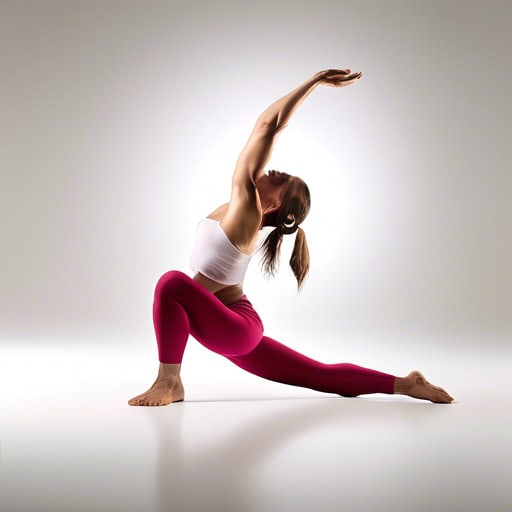
Flexibility(Noun)
/Flex - i - bil - i - tee/
Flexibility in Bikram Yoga refers to the ability to move and stretch the body with ease and grace during practice.
Synonyms: adaptability, suppleness, nimbleness, elasticity, agility, pliability, versatility, mobility, dexterity, limberness
Example Sentences:
- Bikram Yoga focuses on increasing flexibility through a series of challenging poses and deep stretches.
- Flexibility is essential in Bikram Yoga to prevent injuries and improve overall physical performance.
- Regular practice of Bikram Yoga can help improve flexibility, balance, and strength in the body.
Word Origin: The term "flexibility" in the context of Bikram Yoga comes from the Latin word "flexibilis," which means easily bent or adaptable. In Bikram Yoga, flexibility refers to the ability of the body to move and stretch easily and smoothly through a range of motions without causing injury or strain. This flexibility is achieved through regular practice of the yoga postures, or asanas, which help to increase the flexibility of the muscles, joints, and connective tissues in the body. The emphasis on flexibility in Bikram Yoga is important for improving overall physical health, reducing the risk of injury, and promoting a sense of relaxation and well-being.

Sweat(Noun)
/1. Sweat: swet
2. Hot: hat
3. Stretch: strech
4. Studio: stoo-dee-oh
5. Exercise: ek-ser-syz
6. Mat: mat
7. Water: wa-ter
8. Towel: tou-el
9. Hydrate: hi-drayt
10. Endurance: en-dur-ans/
In Bikram Yoga, "sweat" refers to the profuse sweating that occurs during the 90-minute practice in a heated room.
Synonyms: perspiration, humidity, moisture, dampness, humidity, condensation
Example Sentences:
- After a challenging Bikram Yoga class, the room was filled with the smell of sweat.
- The heat caused beads of sweat to drip down my face as I struggled to hold each pose.
- Even though I was drenched in sweat, I felt a sense of accomplishment after completing the intense workout.
Word Origin: The word "sweat" in the context of Bikram Yoga comes from the Old English word "swātan," which means "to perspire." This word has its origins in the Proto-Germanic word "swaitan," which also means "to sweat." The act of sweating during Bikram Yoga is a natural response to the intense heat and physical exertion of the practice.

2 breathing exercises(Noun)
/1. Pranayama: Pra-na-ya-ma
2. Kapalbhati: Ka-pal-bha-ti/
2 breathing exercises in Bikram Yoga are Kapalbhati (skull shining breath) and Ujjayi (victorious breath), focusing on breath control and energy flow.
Synonyms: inhaling, exhaling, pranayama, deep breathing, ujjayi breath
Example Sentences:
- In Bikram Yoga, practitioners are encouraged to incorporate 2 breathing exercises, such as Kapalbhati and Ujjayi, to enhance their practice and connect with their breath.
- Kapalbhati and Ujjayi are essential components of Bikram Yoga, helping students to cultivate mindfulness and improve their respiratory function.
- By incorporating Kapalbhati and Ujjayi into their practice, Bikram Yoga students can deepen their connection to breath, promoting relaxation and focus during their practice.
Word Origin: The term "breathing exercises" in the context of Bikram Yoga does not have a specific etymology, as it is a general term used to refer to the various breathing techniques and practices incorporated into the Bikram Yoga practice. However, the practice of incorporating specific breathing techniques and exercises into yoga has roots in ancient Indian traditions, particularly in the practice of pranayama, which is the regulation of the breath through specific techniques. The word "pranayama" itself is derived from the Sanskrit words "prana," meaning life force or vital energy, and "yama," meaning control or regulation.
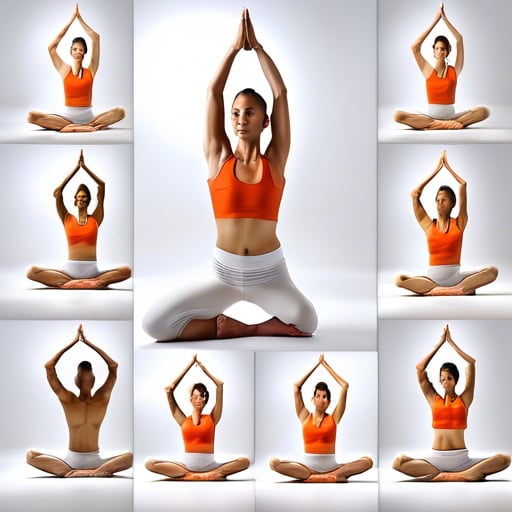
26 postures(Noun)
//twɛnti sɪks poʊstʃərz//
26 postures refer to the specific sequence of poses practiced in Bikram Yoga, each designed to target different areas of the body.
Synonyms: Standing Deep Breathing, Half Moon Pose with Hands to Feet Pose, Awkward Pose, Eagle Pose, Standing Head to Knee Pose, Standing Bow Pose, Balancing Stick Pose, Standing Separate Leg Stretching Pose, Triangle Pose, Standing Separate Leg Head to Knee Pose, Tree Pose, Toe Stand Pose, Dead Body Pose, Wind Removing Pose, Sit-up, Cobra Pose, Locust Pose, Full Locust Pose, Bow Pose, Fixed Firm Pose, Half Tortoise Pose, Camel Pose, Rabbit Pose, Head to Knee Pose with Stretching Pose, Spine Twisting Pose
Example Sentences:
- She diligently practiced the 26 postures of Bikram Yoga every morning to improve her flexibility and strength.
- The instructor guided the class through the 26 postures, ensuring everyone maintained proper form and alignment.
- After completing the 26 postures, she felt a sense of accomplishment and relaxation, knowing she had worked out every muscle in her body.
Word Origin: The term "26 postures" in the context of Bikram Yoga refers to the specific sequence of yoga poses taught in the Bikram Yoga method, which was developed by Bikram Choudhury. The word "posture" comes from the Latin word "postura," meaning "position" or "attitude." The number 26 refers to the total number of postures in the sequence.
Bikram Choudhury created this specific sequence of 26 postures and two breathing exercises to be practiced in a room heated to 105 degrees Fahrenheit. The sequence is designed to systematically work every part of the body, promoting strength, flexibility, and balance. Each posture is performed in a specific order to maximize the benefits of the practice.
Overall, the term "26 postures" in Bikram Yoga refers to the prescribed sequence of yoga poses that practitioners follow during a Bikram Yoga class.

Hot room(Noun)
/Hot room = hat rum/
A hot room in Bikram Yoga refers to a studio heated to a temperature of around 105 degrees Fahrenheit for practice.
Synonyms: sweaty studio, heated space, warm environment, heated room, heated studio, sweaty room
Example Sentences:
- The hot room in Bikram Yoga can help increase flexibility and detoxify the body.
- It can be challenging to practice in a hot room, but many find it invigorating.
- Remember to stay hydrated when practicing in a hot room to prevent dehydration.
Word Origin: The term "hot room" in the context of Bikram Yoga refers to the heated room in which the yoga practice takes place. The practice of Bikram Yoga was developed by Bikram Choudhury in the 1970s, and he specifically designed the practice to be done in a room heated to 105 degrees Fahrenheit with 40% humidity.
The term "hot room" itself does not have a specific etymology, as it is simply a descriptive term for the heated environment in which Bikram Yoga is practiced. However, the use of heat in yoga practices can be traced back to ancient traditions in India, where practitioners would use fire or other heat sources to warm up the body before performing yoga postures.
In the context of Bikram Yoga, the heat is believed to help increase flexibility, prevent injury, and promote detoxification through sweating. While some practitioners enjoy the intensity of the heat, others may find it challenging or uncomfortable. Regardless, the hot room is a central component of the Bikram Yoga practice and is intended to enhance the physical and mental benefits of the practice.

Heat(Noun)
/Heat: heet/
Heat in Bikram Yoga refers to the high temperature maintained in the studio to aid in flexibility and detoxification.
Synonyms: sweat, warmth, intensity, humidity, high temperature, hotness, swelter
Example Sentences:
- After an intense session of Bikram Yoga, I could feel the heat radiating from my body.
- The heat in the studio helped me to push past my limits and deepen my practice.
- I always make sure to hydrate properly before and after class to combat the effects of the intense heat.
Word Origin: The word "heat" in the context of Bikram Yoga comes from the founder of the practice, Bikram Choudhury. He created a specific sequence of 26 poses and 2 breathing exercises that are performed in a room heated to 105 degrees Fahrenheit with 40% humidity. This intense heat is said to help warm up the muscles, increase flexibility, and detoxify the body. The heat is a key component of Bikram Yoga and is believed to enhance the benefits of the practice.
Kundalini Yoga
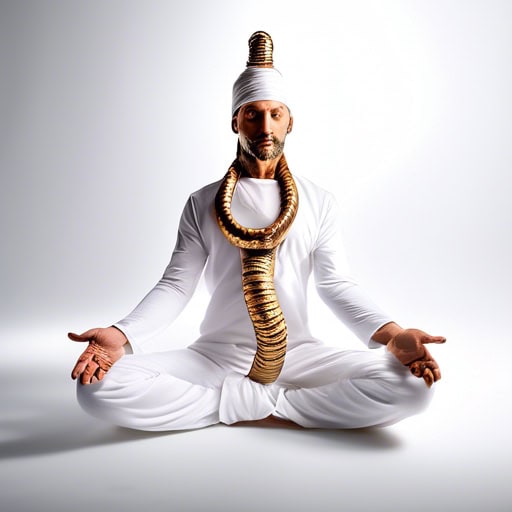
Kundalini(Noun)
/Kun-da-lee-nee/
Kundalini refers to the dormant energy believed to be located at the base of the spine, awakened through Kundalini Yoga.
Synonyms: energy, life force, serpent power, divine power, spiritual energy, cosmic energy
Example Sentences:
- Her Kundalini energy was awakened during her intense Kundalini Yoga practice.
- The Kundalini energy surged up her spine, bringing about a profound sense of enlightenment.
- Many practitioners of Kundalini Yoga believe that awakening their Kundalini energy leads to spiritual growth and enlightenment.
Word Origin: The word "Kundalini" has its origins in Sanskrit, an ancient Indo-European language of India. In Sanskrit, "kundalini" is derived from the word "kundala," which means "coiled," and is often used to describe a coiled serpent. This is fitting, as Kundalini energy is often depicted as a coiled serpent at the base of the spine in yogic tradition.
In the context of Kundalini Yoga, the term refers to the dormant spiritual energy believed to be located at the base of the spine. Through the practice of Kundalini Yoga, this energy is said to be awakened and guided through the body's energy centers, or chakras, leading to spiritual enlightenment and self-realization.
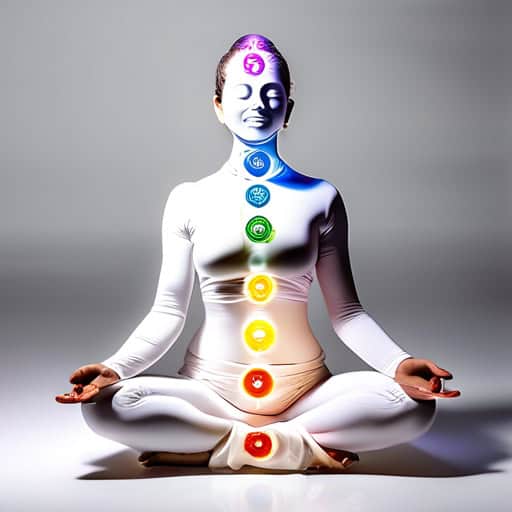
Chakras(Noun)
/Chakras: "CHAH-krahss"/
Chakras are energy centers located along the spine in Kundalini Yoga, influencing physical, emotional, and spiritual well-being.
Synonyms: energy centers, energy wheels, psychic centers, subtle energy centers, lotus petals
Example Sentences:
- Her meditation practice focused on balancing her chakras to improve her overall well-being.
- During yoga class, the instructor guided the students in a visualization exercise to activate their chakras.
- She felt a sense of alignment and clarity after receiving a chakra balancing treatment from a reiki practitioner.
Word Origin: The word "chakras" is derived from the Sanskrit word "cakra," which means "wheel" or "circle." In the context of Kundalini Yoga, chakras refer to the seven energy centers located along the spine, starting from the base of the spine and moving up to the crown of the head. These energy centers are believed to be connected to different physical, emotional, and spiritual aspects of the individual, and balancing these chakras is thought to promote health and well-being. The concept of chakras originates from ancient Indian spiritual traditions and has been incorporated into various forms of yoga and meditation practices.

Mantra(Noun)
/Man-tra: Mun-truh/
A mantra in Kundalini Yoga is a sacred word, sound, or phrase repeated during meditation to focus the mind and promote spiritual growth.
Synonyms: affirmation, chant, invocation, repetition, prayer, recitation
Example Sentences:
- Her mantra during meditation was "Sat Nam," which means "truth is my identity."
- She recited her mantra with each breath, feeling a sense of calm and centeredness.
- The mantra "Wahe Guru" helped him connect with his higher self and experience a profound sense of peace.
Word Origin: The word "mantra" comes from Sanskrit, the ancient language of India. It is derived from the root words "man," which means "mind," and "tra," which means "instrument" or "tool." Therefore, the literal translation of mantra is "instrument of the mind." In Kundalini Yoga, mantras are sacred sounds or phrases that are repeated during meditation to help focus the mind and connect with higher consciousness.
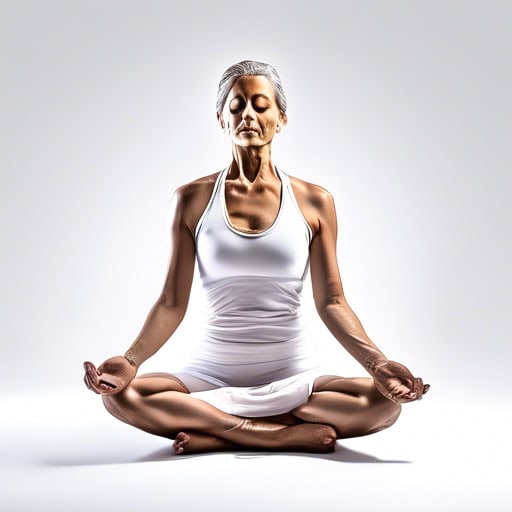
Pranayama(noun)
/Pra-na-ya-ma/
Pranayama in Kundalini Yoga refers to the practice of controlled breathing techniques to regulate energy flow and increase vitality.
Synonyms: breathwork, conscious breathing, yogic breathing
Example Sentences:
- Pranayama is an essential element of Kundalini Yoga practice, helping to balance the energy within the body.
- Deepening your understanding of Pranayama can enhance your overall well-being and spiritual growth.
- Regularly incorporating Pranayama into your daily routine can help to calm the mind and improve focus.
Word Origin: The word "Pranayama" is derived from the Sanskrit words "prana," meaning life force or vital energy, and "ayama," meaning control or expansion. In the context of Kundalini Yoga, Pranayama refers to the practice of controlling and expanding the breath to regulate the flow of prana in the body. This practice is believed to help balance the energy centers (chakras) and promote physical, mental, and spiritual well-being.
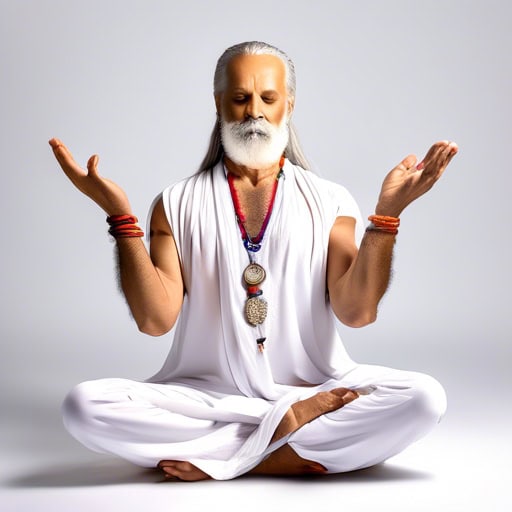
Kriya(Noun)
/Kree-ya/
Kriya refers to a specific sequence of actions or exercises in Kundalini Yoga designed to achieve a particular outcome or goal.
Synonyms: action, practice, technique, exercise, ritual
Example Sentences:
- I start my day with a Kundalini Yoga practice that includes several Kriyas to help energize and balance my chakras.
- The Kriya we did in class today focused on opening the heart center and cultivating feelings of love and compassion.
- After completing the Kriya, I felt a sense of clarity and lightness in both my body and mind.
Word Origin: The word "kriya" in the context of Kundalini Yoga comes from Sanskrit, where it means "action" or "deed." In Kundalini Yoga, kriyas refer to specific sets of exercises or practices designed to achieve a particular outcome, such as balancing the chakras or awakening the Kundalini energy. These kriyas often involve a combination of physical postures, breathwork, chanting, and meditation. The term "kriya" emphasizes the idea that through intentional action and practice, one can bring about transformation and spiritual growth.
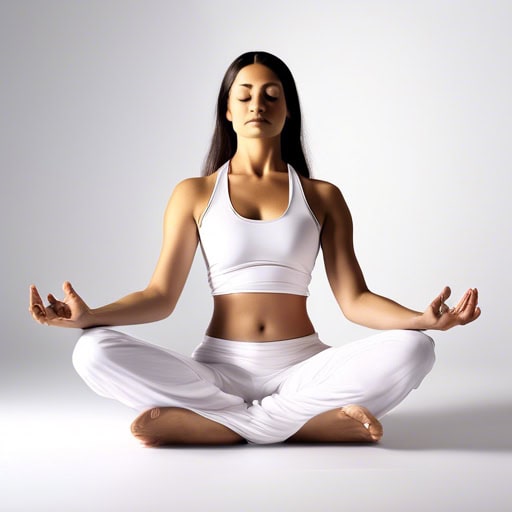
Meditation(Noun)
/Me-di-ta-tion: Meh-dee-ta-shun/
Meditation in Kundalini Yoga involves focusing on specific movements, breathwork, mantras, or visualizations to achieve mental clarity and relaxation.
Synonyms: reflection, contemplation, concentration, mindfulness, introspection, prayer
Example Sentences:
- I practice meditation every morning to help calm my mind and center myself.
- During my Kundalini Yoga class, we often incorporate meditation to deepen our practice.
- Meditation has become an essential part of my daily routine for managing stress and promoting mindfulness.
Word Origin: The word "meditation" in the context of Kundalini Yoga originates from the Latin word "meditatio," which means "to think, contemplate, or meditate." In Kundalini Yoga, meditation refers to a practice of mental concentration and mindfulness to achieve a state of deep relaxation, self-awareness, and spiritual connection. The word "meditation" is used in various ancient Indian texts and traditions, including Kundalini Yoga, to describe the practice of focusing the mind and body to reach a higher state of consciousness and enlightenment.

Energy centers(Noun)
/En-er-gee sen-ters/
Energy centers, or chakras, are points of subtle energy located along the spine in Kundalini Yoga, responsible for spiritual growth.
Synonyms: chakras, power points, energy wheels, spiritual centers, vortexes
Example Sentences:
- The energy centers, or chakras, play a crucial role in balancing the flow of energy throughout the body.
- Meditation and yoga practices can help activate and align the energy centers to promote overall well-being.
- It is believed that blockages in the energy centers can lead to physical, emotional, and mental imbalances.
Word Origin: The term "energy centers" in the context of Kundalini Yoga refers to the seven chakras or energy points in the body that are believed to be responsible for the flow of spiritual energy.
The word "chakra" comes from the Sanskrit language, and it translates to "wheel" or "disk." This term is used to describe the spinning vortexes of energy that are believed to exist within the body. The concept of chakras has its roots in ancient Indian spiritual traditions and is a central component of Kundalini Yoga practices.
In Kundalini Yoga, it is believed that the energy within the body must flow freely through these energy centers in order to achieve spiritual balance and enlightenment. By practicing specific yoga poses, breathing techniques, and meditation, individuals can work to open and align their chakras, allowing for the free flow of energy throughout the body.
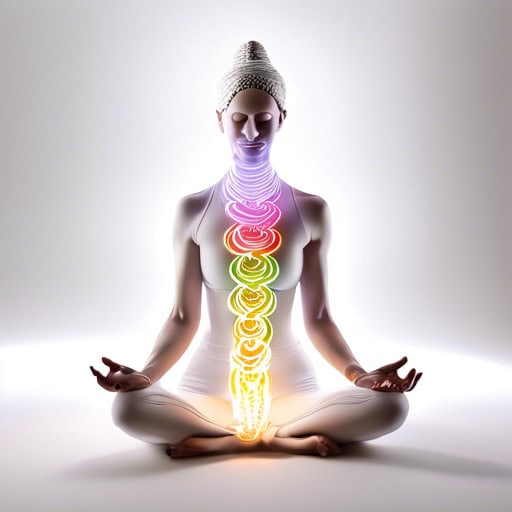
Awakening(Noun)
/A - wa - ke - ning/
Awakening in Kundalini Yoga refers to the process of activating the dormant spiritual energy believed to reside at the base of the spine.
Synonyms: enlightenment, realization, spiritual awakening, Kundalini rising, self-discovery, inner transformation, consciousness expansion, spiritual rebirth
Example Sentences:
- After years of practicing Kundalini Yoga, she finally experienced a powerful awakening during meditation.
- The awakening of her spiritual energy brought a sense of inner peace and clarity to her life.
- The guru guided her through the process of awakening her Kundalini energy through various breathing techniques and poses.
Word Origin: The term "awakening" in the context of Kundalini Yoga comes from the Sanskrit word "bodha," which means awakening or enlightenment. In Kundalini Yoga, the awakening refers to the process of awakening the dormant energy at the base of the spine, known as Kundalini, and allowing it to rise through the energy centers of the body, known as chakras. This awakening is said to lead to spiritual enlightenment and a deeper connection to the divine.
Restorative Yoga
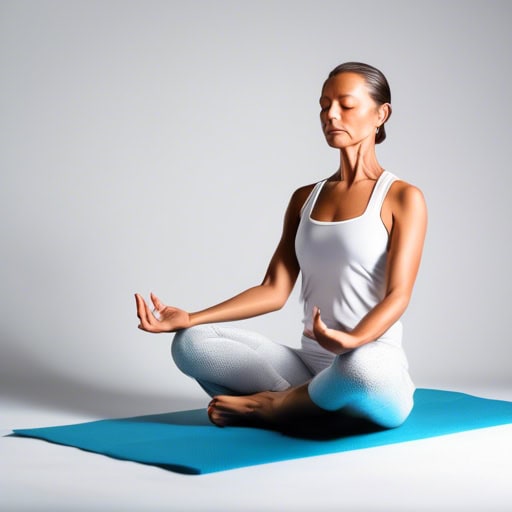
Meditation(Noun)
/Me-di-ta-tion/
Meditation in Restorative Yoga involves deep relaxation and mindfulness to calm the mind and release tension in the body.
Synonyms: reflection, mindfulness, relaxation, contemplation, introspection, centering, quieting the mind, serenity
Example Sentences:
- I practice meditation every morning to start my day with a clear mind and positive energy.
- During restorative yoga, I focus on my breath and use meditation techniques to find inner peace.
- Meditation has helped me manage my stress and anxiety, allowing me to live a more balanced and fulfilling life.
Word Origin: The word "meditation" comes from the Latin word "meditatio," which means "contemplation" or "reflection." In the context of Restorative Yoga, meditation refers to the practice of quieting the mind, focusing on the present moment, and cultivating a sense of inner peace and relaxation. This practice often involves deep breathing, mindfulness, and guided visualization to promote physical, mental, and emotional well-being.
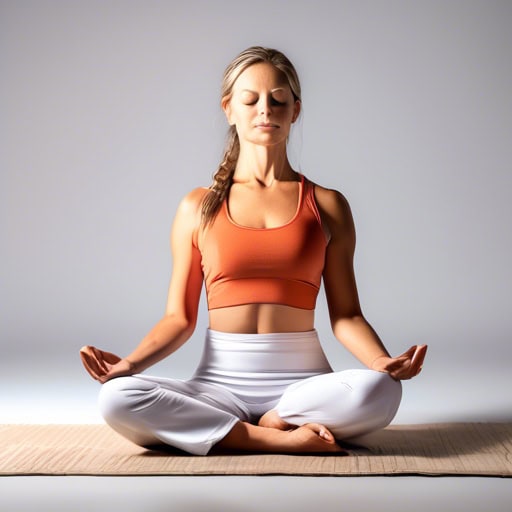
Mindfulness(Noun)
/1. Mind - mind
2. Ful - ful
3. Ness - ness/
Mindfulness in Restorative Yoga involves being fully present in the moment, focusing on breath and sensations to promote relaxation.
Synonyms: awareness, presence, focus, attention, concentration, consciousness, introspection, meditation
Example Sentences:
- Practicing mindfulness during restorative yoga helps to quiet the mind and reduce stress.
- By bringing awareness to each movement and breath, mindfulness can deepen the relaxation experience.
- Incorporating mindfulness into restorative yoga can enhance the mind-body connection and overall well-being.
Word Origin: The term "mindfulness" in the context of Restorative Yoga comes from the Buddhist concept of "sati," which means awareness, attention, and remembering. This concept was popularized in the West by Jon Kabat-Zinn, who founded the Mindfulness-Based Stress Reduction program in the late 1970s. In Restorative Yoga, mindfulness refers to a state of focused awareness on the present moment, allowing practitioners to cultivate a sense of calm, relaxation, and inner peace. The practice of mindfulness in Restorative Yoga involves tuning into the sensations of the body, observing the breath, and letting go of distractions and thoughts.

Stretching(Verb)
/Stretching: strech-ing/
Stretching in Restorative Yoga involves gentle, prolonged holds in passive poses to release tension, improve flexibility, and promote relaxation.
Synonyms: lengthening, extending, releasing, relaxing
Example Sentences:
- After a long day at work, I like to wind down by stretching in restorative yoga poses to help release the tension in my muscles.
- Stretching in restorative yoga allows me to improve my flexibility and mobility while also calming my mind and promoting relaxation.
- Incorporating stretching into my daily routine has significantly reduced my muscle stiffness and improved my overall sense of well-being.
Word Origin: The word "stretching" in the context of restorative yoga comes from the Old English word "streccan," which means to extend or lengthen. In restorative yoga, stretching refers to the gentle and deliberate movements and poses that are designed to improve flexibility, release tension, and promote relaxation. The practice of stretching in restorative yoga is often done with the support of props such as bolsters, blankets, and blocks to help the body relax and release tension more deeply.

Breathing(Verb)
/Breathing: Bree-th-ing/
Breathing in restorative yoga involves slow, deep inhalations and exhalations to help calm the mind and relax the body.
Synonyms: inhaling, exhaling, deepening the breath, taking in air, releasing the breath
Example Sentences:
- After a long day at work, I find comfort in practicing deep breathing exercises to unwind and de-stress.
- During a restorative yoga class, the instructor guided us through various breathing techniques to help us fully relax and release tension.
- I always make sure to take a moment in the morning for some mindful breathing exercises to start my day with a sense of peace and clarity.
Word Origin: The word "breathing" in the context of Restorative Yoga comes from the Old English word "bræð," which means "odor, scent, vapor." It is derived from the Proto-Germanic word "bræthaz," which means "smell, vapor, exhalation." The word "breathing" is used in yoga to refer to the act of inhaling and exhaling, which is a vital component of the practice as it helps to calm the mind and relax the body.
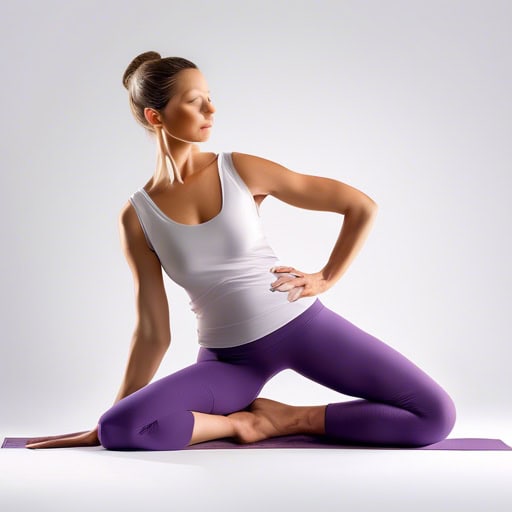
Poses(Verb)
/Poh-ziz/
Poses in Restorative Yoga are gentle, supported postures held for an extended period to promote relaxation and stress relief.
Synonyms: stretches, postures, asanas, positions, exercises, movements
Example Sentences:
- Restorative yoga incorporates various poses that help release tension in the body and calm the mind.
- The poses in restorative yoga are designed to allow for deep relaxation and rejuvenation.
- By practicing restorative poses regularly, one can experience profound benefits for both body and mind.
Word Origin: The word "poses" in the context of Restorative Yoga comes from the Sanskrit word "asana," which refers to a specific physical posture or position in yoga practice. The word "asana" itself is derived from the Sanskrit root "as," which means "to sit" or "to be present." In Restorative Yoga, poses are often held for longer periods of time to promote relaxation, release tension, and restore balance to the body and mind.

Healing(Noun)
/Healing: hee-ling/
Healing in Restorative Yoga refers to the process of physical, emotional, and spiritual restoration through gentle, supported poses and deep relaxation.
Synonyms: rejuvenating, soothing, therapeutic, restorative, calming, recuperative, regenerative, revitalizing, renewing, invigorating
Example Sentences:
- Her journey to healing after the accident was long and challenging, but with the help of restorative yoga, she found peace and relief.
- The healing energy of the restorative poses helped her release tension and trauma stored in her body, allowing for deep emotional release.
- Through the practice of restorative yoga, she discovered a powerful tool for self-healing and transformation.
Word Origin: The word "healing" in the context of Restorative Yoga comes from the Old English word "hælan," which means to make whole or sound. It is derived from the Proto-Germanic word "hailjan," meaning to heal or make whole. In Restorative Yoga, healing refers to the process of restoring balance and wellness to the body, mind, and spirit through gentle and supportive yoga poses, breathwork, and relaxation techniques.
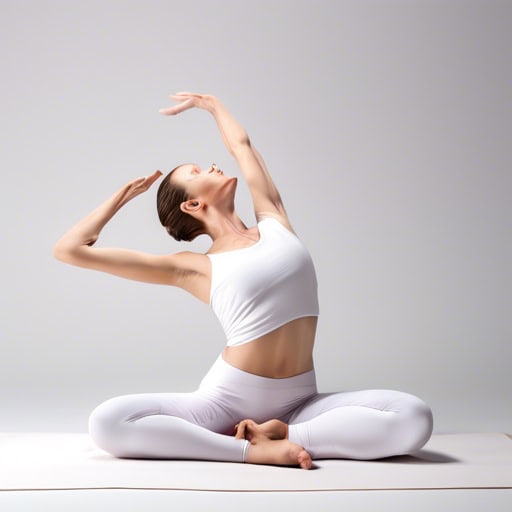
Gentle(Adjective)
/Gen-tul/
Gentle refers to slow, soothing movements and poses in Restorative Yoga that promote relaxation, flexibility, and stress relief.
Synonyms: soothing, calming, mild, soft, tender, nurturing, peaceful, relaxing, mellow, delicate
Example Sentences:
- She guided her body into a gentle stretch, feeling the tension slowly melt away.
- The instructor's gentle voice and calming presence helped the students sink deeper into relaxation.
- The gentle movements in restorative yoga allowed her to release the day's stress and find peace within.
Word Origin: The word "gentle" in the context of Restorative Yoga comes from the Middle English word "gentil," which originally meant "noble" or "well-born." Over time, the meaning of the word evolved to include characteristics such as kind, mild, and soft. In the context of Restorative Yoga, "gentle" refers to a slow, soothing, and nurturing practice that focuses on relaxation and releasing tension in the body. The intention is to create a sense of calm and ease, allowing the body to rest and restore itself.
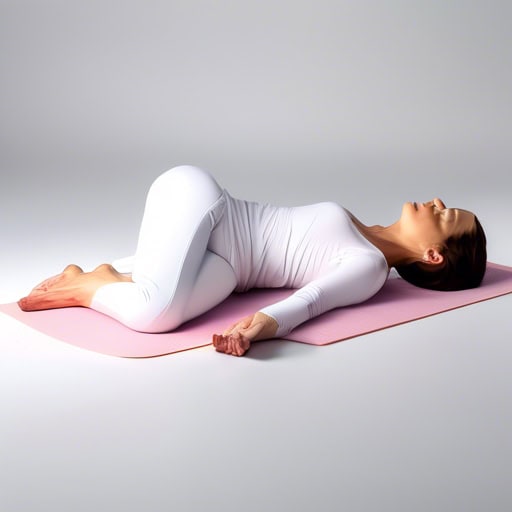
Relaxation(Noun)
/Relaxation: Re-lax-a-tion/
Relaxation in Restorative Yoga involves releasing tension in the body and mind through gentle poses and deep breathing exercises.
Synonyms: rest, repose, ease, calmness, tranquility, peace, serenity, comfort, leisure
Example Sentences:
- After a long day at work, I enjoy practicing restorative yoga for relaxation.
- The sound of ocean waves and the smell of lavender candles help me achieve a state of relaxation during my meditation.
- I find that taking deep breaths and focusing on each inhale and exhale brings a sense of relaxation to my mind and body.
Word Origin: The word "relaxation" comes from the Latin word "relaxare," which means "to loosen or relax." In the context of Restorative Yoga, relaxation refers to the practice of releasing tension and stress from the body and mind through gentle poses and deep breathing. This allows the body to enter a state of deep relaxation and rest, promoting healing and rejuvenation.
Yoga positions
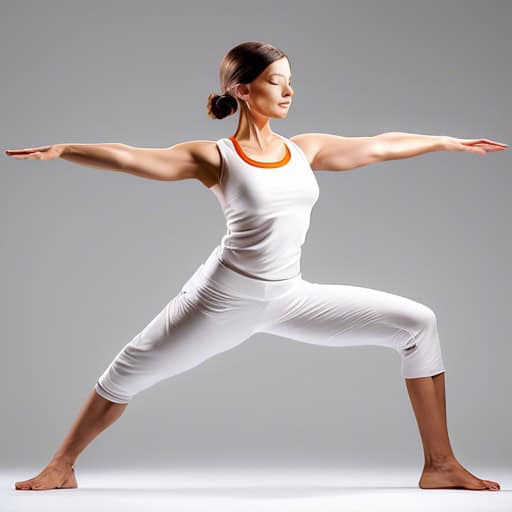
Asana(Noun)
/1. Downward Facing Dog - Daun-werd Faysing Dawg
2. Warrior I - Wawr-ee-er Wuhn
3. Child's Pose - Chahyldz Pohz
4. Tree Pose - Tree Pohz
5. Cobra Pose - Koh-bruh Pohz
6. Mountain Pose - Moun-tn Pohz
7. Lotus Pose - Loh-tuhss Pohz
8. Bridge Pose - Brij Pohz
9. Warrior II - Wawr-ee-er Too
10. Corpse Pose - Korpz Pohz/
Asana refers to a specific physical posture or position practiced in Yoga to promote flexibility, strength, and relaxation of the body.
Synonyms: pose, position, posture, stance, seat, seat, seat, seat
Example Sentences:
- I have been practicing the warrior II asana to improve my balance and strengthen my legs.
- During my yoga class, we focused on mastering the downward dog asana to stretch out our backs.
- The child's pose asana is a great way to relax and release tension in my lower back after a long day.
Word Origin: The word "asana" comes from Sanskrit, an ancient Indo-European language that is the liturgical language of Hinduism, Buddhism, and Jainism. In Sanskrit, "asana" (आसन) means "seat" or "posture." In the context of yoga, "asana" refers to the various physical poses or positions that are practiced to promote physical health, mental clarity, and spiritual growth. The concept of "asana" is a fundamental aspect of yoga practice and is one of the eight limbs of Patanjali's Yoga Sutras.
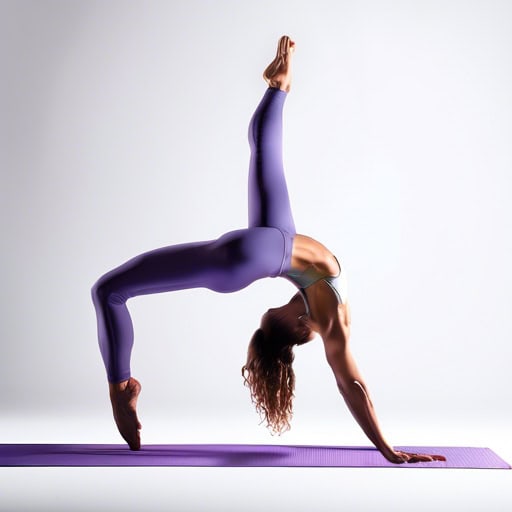
Vinyasa(Noun)
/Vin-ya-sa/
Vinyasa is a style of yoga in which poses flow together in a sequence, often coordinated with breath.
Synonyms: flow, sequence, movement, progression, transition, series, arrangement, order, pattern
Example Sentences:
- Her Vinyasa practice helps her find balance and peace within her body and mind.
- The instructor guided the class through a series of Vinyasa poses, focusing on smooth transitions and deep breathing.
- After a challenging Vinyasa session, she felt rejuvenated and energized.
Word Origin: The word "vinyasa" comes from Sanskrit and is composed of two words: "vi," which means "in a special way" or "in a certain way," and "nyasa," which means "to place" or "to put." In the context of Yoga positions, vinyasa refers to a specific sequence of movements that are coordinated with the breath. It is often used to describe the flowing transitions between poses in a yoga practice.
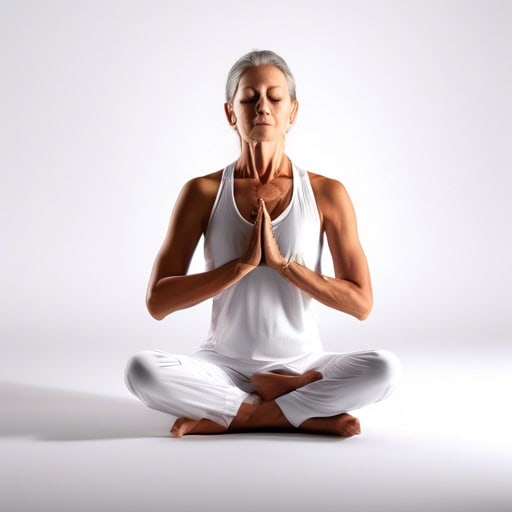
Pranayama(Noun)
/Pra-na-ya-ma/
Pranayama is the practice of breath control in yoga, involving various breathing techniques to improve physical, mental, and spiritual well-being.
Synonyms: breath control, breathing exercises, yogic breathing, yogic breathwork
Example Sentences:
- Pranayama is an essential component of yoga, helping to calm the mind and regulate the breath.
- In my yoga class, we often start with Pranayama exercises to center ourselves before moving into the physical postures.
- Pranayama techniques can be a powerful tool for reducing stress and promoting relaxation in daily life.
Word Origin: The word "pranayama" comes from the Sanskrit words "prana," meaning life force or vital energy, and "ayama," meaning extension or expansion. Therefore, pranayama translates to the practice of extending or expanding the life force within oneself through breathing techniques and exercises.
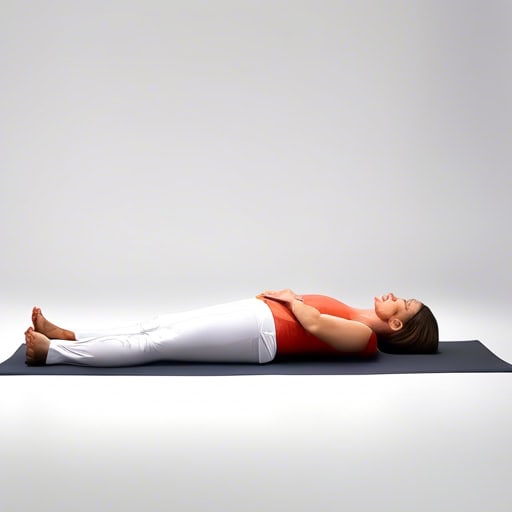
Savasana(Noun)
/sa-va-sa-na/
Savasana, also known as Corpse Pose, is a relaxation pose performed at the end of a yoga practice.
Synonyms: corpse pose, relaxation pose, final relaxation pose
Example Sentences:
- After a challenging yoga session, I always look forward to the peaceful Savasana pose.
- During Savasana, I focus on deep breathing and letting go of any tension in my body.
- Savasana helps me feel rejuvenated and ready to take on the rest of my day.
Word Origin: The word "Savasana" comes from the Sanskrit words "sava" meaning corpse and "asana" meaning posture or position. In Yoga, Savasana is often referred to as the Corpse Pose, where practitioners lie down on their back in a relaxed and restful position, resembling a corpse. This posture is typically used at the end of a yoga practice to help the body relax and rejuvenate.
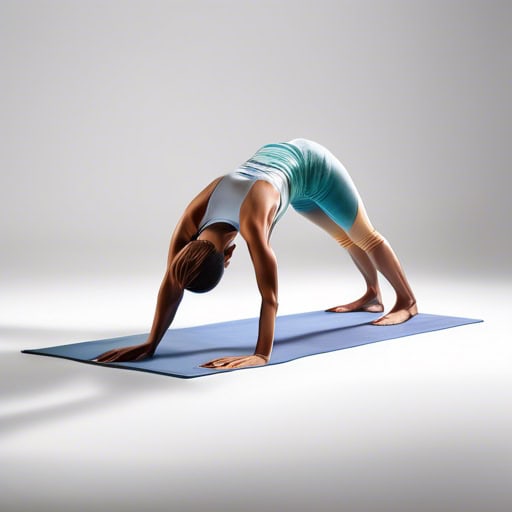
Downward Dog(Noun)
/Down - daʊn
ward - wɔːrd
Dog - dɒg/
Downward Dog is a yoga pose where the body forms an inverted V shape with hands and feet on the ground.
Synonyms: forward fold, forward bend, uttanasana
Example Sentences:
- I struggle to hold the downward dog pose for more than a few breaths before feeling the burn in my arms and legs.
- During my yoga practice, I always feel a sense of grounding and calmness when transitioning into downward dog.
- The instructor reminded us to keep our hips lifted high in downward dog to properly align our bodies and engage our core muscles.
Word Origin: The term "Downward Dog" in the context of yoga positions comes from the Sanskrit word "Adho Mukha Svanasana."
"Adho" means downward, "mukha" means face, and "svana" means dog. So, "Adho Mukha Svanasana" can be translated as "downward facing dog pose" in English. Over time, this Sanskrit term has been shortened to "Downward Dog" for simplicity and ease of use in the Western yoga community.
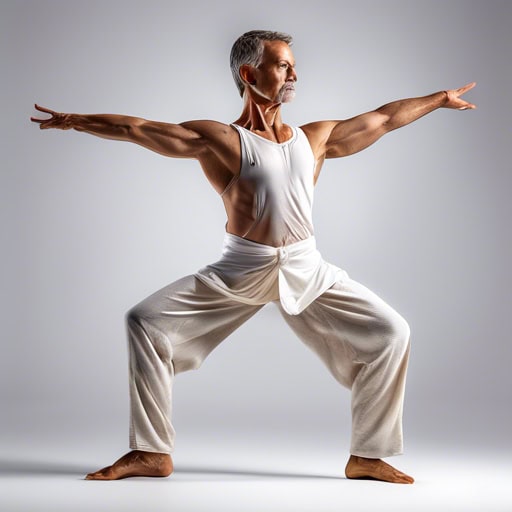
Warrior Pose(Noun)
/Warrior Pose: War-ee-ur Pohz/
Warrior Pose is a standing yoga pose that strengthens the legs, opens the hips, and improves balance and focus.
Synonyms: Warrior I Pose, Warrior II Pose, Warrior III Pose, Reverse Warrior Pose, Peaceful Warrior Pose
Example Sentences:
- She held the Warrior Pose with grace and strength, feeling a sense of power and stability flow through her body.
- As she moved into Warrior Pose, she focused on her breath and found a sense of calm and centering.
- Practicing Warrior Pose regularly helped her build both physical and mental resilience, allowing her to face challenges with confidence.
Word Origin: The term "Warrior Pose" in the context of yoga positions originates from the Sanskrit word "Virabhadrasana." In Sanskrit, "Vira" means "hero" or "warrior," and "Bhadra" means "auspicious" or "blessed." Therefore, "Virabhadrasana" translates to "Warrior Pose," reflecting the strength, courage, and grace associated with the pose. The pose is named after the mythical warrior Virabhadra, who was created by the Hindu god Shiva to avenge the death of his wife Sati. The pose is intended to embody the qualities of a warrior - strength, focus, determination, and power.
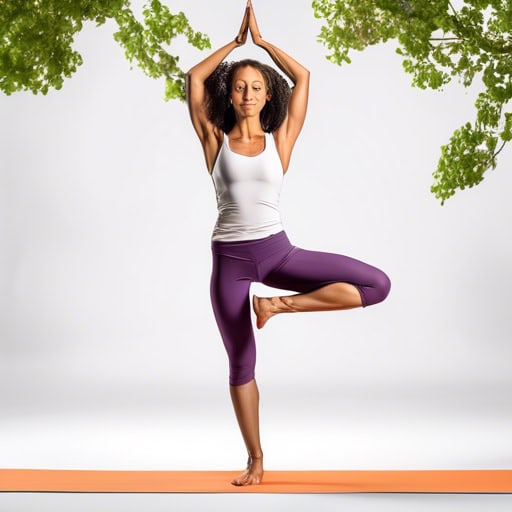
Tree Pose(Noun)
/Tree Pose: /tri pəʊz//
Tree Pose, or Vrksasana, is a standing balance pose in yoga where one foot is rooted to the ground while the other foot is placed on the inner thigh.
Synonyms: Vrksasana
Example Sentences:
- She gracefully held the Tree Pose, her arms extended overhead like branches reaching towards the sky.
- The instructor guided the class through the Tree Pose, reminding everyone to find their focus and balance.
- After a few deep breaths, she shifted into Tree Pose, feeling a sense of calm and strength wash over her.
Word Origin: The word "Tree Pose" in the context of Yoga positions comes from the Sanskrit term "Vrksasana." In Sanskrit, "Vrksa" means tree, and "asana" means pose or posture. Therefore, the literal translation of "Vrksasana" is Tree Pose. This pose is named after the strong and steady stance of a tree, symbolizing balance, strength, and grounding in Yoga practice.
Quick Facts
- Yoga originated in ancient India over 5,000 years ago and has since spread worldwide as a popular form of physical exercise and mental relaxation.
- There are over 100 different types of yoga, each focusing on different aspects such as flexibility, strength, breath control, meditation, or spiritual enlightenment.
- Regular practice of yoga has been shown to reduce stress, improve flexibility, increase muscle strength, and promote overall well-being.
- Yoga is not just about physical postures (asanas) – it also includes breathing techniques (pranayama), meditation, and ethical principles for living a balanced life.
- The word “yoga” comes from the Sanskrit word “yuj,” which means to yoke or unite, symbolizing the union of body, mind, and spirit that is central to the practice.
